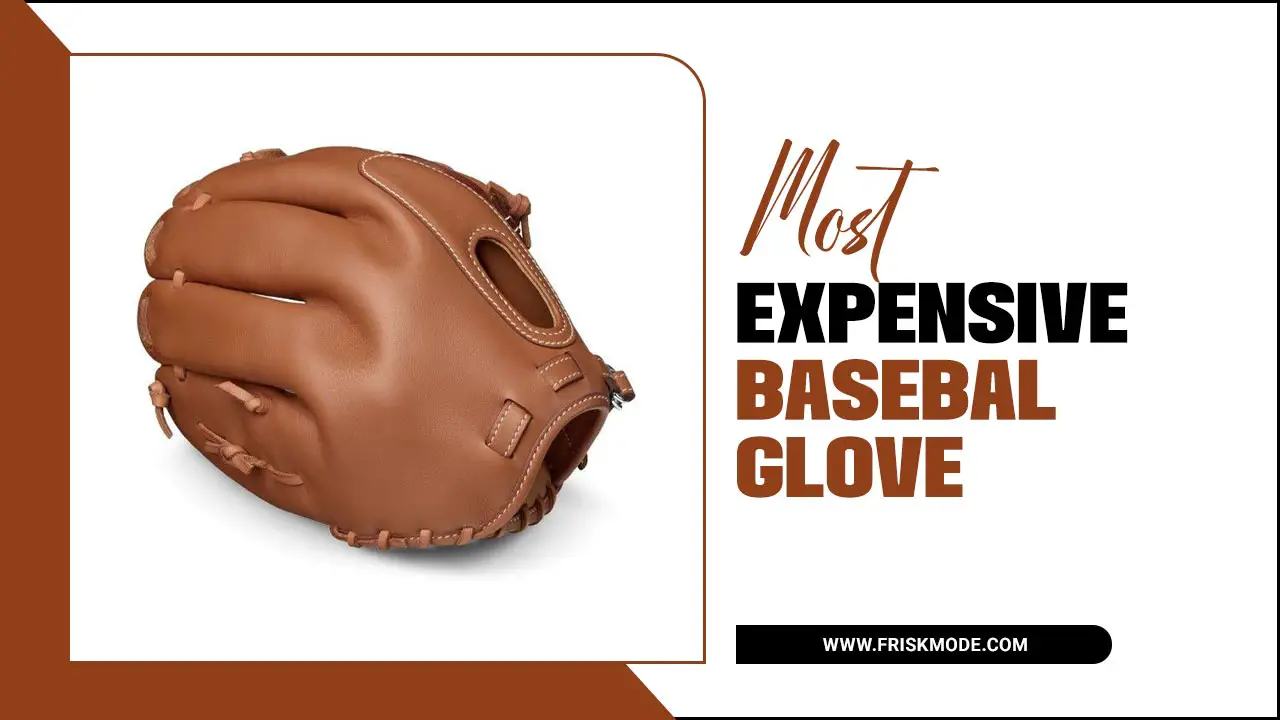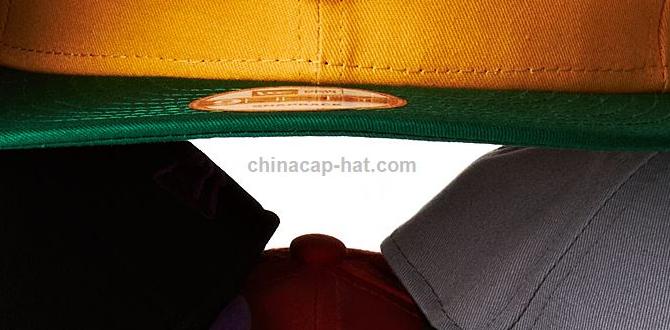Easton catchers throat guard sizing ensures a snug, protective fit, preventing injuries without hindering movement. This guide breaks down how to measure and select the right size for optimal safety and comfort on the field.
Getting the right fit for your Easton catcher’s throat guard is super important! It’s one of those pieces of gear that might seem small, but it plays a big role in keeping you safe. No one wants to worry about a stray foul tip when they’re focused on the game. A properly sized throat guard means better protection and more confidence behind the plate. We’ve all seen or heard about players getting hit in the throat, and it’s a scary thought. Don’t let the wrong size add to your worries. This guide will make sizing simple, so you can focus on your game.
Choosing the Right Easton Catcher’s Throat Guard: A Beginner’s Breakdown
As a catcher, you’re on the front lines of the game. You’re facing pitches, blocking balls, and making crucial plays. Your gear needs to keep up, and that includes your throat guard. Easton is a name you’ll see a lot in baseball equipment, and for good reason. They make reliable gear that helps players perform their best. But even with a great brand, getting the right size for your Easton throat guard is key. It’s not just about buying the cheapest or the fanciest option; it’s about finding the one that fits your unique needs and protects you effectively.
This might seem like a small detail, but a poorly fitting throat guard can be uncomfortable, slip out of place, or, worst-case scenario, not offer the protection you need. We want to make sure you’re covered, literally. This guide will walk you through everything you need to know about Easton catcher’s throat guard sizing, from understanding the measurements to finding the perfect fit. Let’s get you geared up and protected!
Why Proper Sizing Matters for Your Easton Throat Guard
Think about it like this: a helmet that’s too big won’t stay on during a collision, and a glove that’s too small won’t catch the ball properly. The same principle applies to your throat guard. Here’s why getting the size right for your Easton model is crucial:
- Maximum Protection: The primary job of a throat guard is to absorb the impact of a foul ball or errant pitch. If it’s too loose, it can shift and leave your throat exposed. If it’s too tight, it might not sit correctly to deflect the impact effectively.
- Comfort and Freedom of Movement: A well-sized throat guard shouldn’t feel restrictive. You need to be able to turn your head, talk to your pitcher, and get into your stances without feeling like your gear is holding you back.
- Preventing Irritation: A guard that constantly rubs or pinches because it’s the wrong size can lead to chafing and discomfort, distracting you from your performance.
- Gear Integration: Your throat guard needs to work seamlessly with your mask and helmet. Proper sizing ensures it attaches securely and doesn’t interfere with the mask’s fit or stability.
- Longevity of Gear: When gear fits correctly, it generally lasts longer. It’s less likely to be stressed or damaged in ways it wasn’t designed for due to poor fit.
Understanding Easton Throat Guard Styles and Sizing
Easton offers a few different styles of catcher’s gear, and while the core sizing principles remain similar, it’s good to be aware of the variations. Most of their catcher’s throat guards are designed to attach to their catcher’s masks. Sizing typically relates to the mask size itself, as the throat guard is an accessory meant to complement it. Common attachment points are usually via clips or built-in slots on the mask frame.
Easton generally categorizes its catcher’s masks (and by extension, its throat guards) into categories like youth, intermediate, and adult. However, within these, there can be specific model differences. The most important thing to remember is that the throat guard is an addition to your mask, so its compatibility with your specific Easton mask model is paramount.
Youth Sizing
Youth throat guards are designed for younger players, typically those in Little League or youth travel ball. These are often slightly smaller and may have simpler attachment mechanisms. The sizing here is usually based on overall proportion for a younger player’s head and neck. It’s less about precise measurements and more about providing adequate coverage for a developing player.
Intermediate Sizing
Intermediate sizing bridges the gap between youth and adult. This is often suitable for middle school players or younger high-school players. These guards offer more coverage than youth models and are built to fit on larger masks. The measurements will start to be more in line with adult sizing, but with a focus on slightly smaller overall dimensions.
Adult Sizing
Adult throat guards are built for the largest masks and offer the most extensive coverage. These are standard for high school, college, and professional players. When you’re looking at adult sizing, you’ll find that the measurements are more precise, and the guards are robust enough to withstand the rigors of higher-level play.
How to Measure for Your Easton Catcher’s Throat Guard
Measuring for your Easton catcher’s throat guard is straightforward, but you need to be accurate. The key measurement relies on the size of your catcher’s mask. Most manufacturers, including Easton, base their throat guard sizing charts on the dimensions or recommended age groups of their masks. However, we can also take a direct measurement to ensure a good fit.
Step 1: Identify Your Easton Catcher’s Mask Size
The easiest way to determine the correct throat guard size is to check your Easton mask first. Masks often have a size label on the interior padding or a tag. If you don’t have a mask yet, or you’re buying a throat guard for the first time, you’ll need to consider:
- Age/League Recommendations: Little League, PONY, Babe Ruth, high school, and college leagues often have guidelines for equipment sizes based on player age or typical head size.
- Mask Dimensions: If available, check the product specifications for your mask model. Look for measurements like the diameter of the cage or the distance between the ear guards.
- General Fit: When worn, the mask should fit snugly but comfortably, without gaps. The eye openings should allow clear vision.
Step 2: Direct Measurement (If Necessary or for Extra Assurance)
If you’re unsure about your mask size or want to double-check, you can take a direct measurement. This measurement is less about the throat guard itself and more about ensuring the throat guard you plan to buy will fit the mask you have or will get.
You’ll need a flexible measuring tape. Here’s what to measure on your mask:
- Width of the Mask Opening: Measure the distance from the outside edge of one earpiece to the outside edge of the other earpiece, horizontally across the front of the mask.
- Height of the Mask Opening: Measure the distance from the top of the mask’s forehead protector to the bottom of the chin guard, vertically.
Compare these measurements to the sizing charts provided by Easton for their throat guards. Often, the chart will link to specific mask models or size ranges.
Step 3: Checking Vendor and Easton Sizing Charts
Once you have an idea of your mask size or direct measurements, consult the official Easton sizing charts. These are usually available on the Easton website or on retailer websites that sell Easton gear. Look for charts that correlate mask size, age group, or direct measurements to throat guard models.
A typical Easton throat guard sizing guide might look something like this (note: always consult the most current official chart):
| Recommended Age/Size Category | Typical Mask Connection Point (Description) | Easton Mask Model Compatibility (Examples) |
|---|---|---|
| Youth (Approx. 7-10 years) | Designed for smaller youth masks, often with simpler clip/snap attachments. | Easton Youth Pro-X, Easton Ghost |
| Intermediate (Approx. 10-14 years) | Fits medium-sized masks, bridging youth and adult fits. | Easton Intermediate Pro-X, Easton BWG |
| Adult (Approx. 14+ years) | For standard adult-sized masks, offering full coverage. | Easton Adult Pro-X, Easton BWG, Easton Pro-Cap |
Important Note: Throat guard sizing is often directly tied to the specific catcher’s mask it’s designed to attach to. Always verify compatibility between the throat guard model and your Easton mask model.
How to Attach and Adjust Your Easton Throat Guard
Once you have the correctly sized Easton throat guard, putting it on is usually straightforward. The exact method depends on the model, but most attach to the lower part of the catcher’s mask frame.
General Attachment Steps:
- Identify Attachment Points: Look at the bottom of your Easton catcher’s mask. You’ll usually find holes, screws, or clips where the throat guard is meant to connect.
- Align the Throat Guard: Position the throat guard so its mounting points align with the attachment points on the mask.
- Secure the Guard:
- Screws/Bolts: If your mask and guard use screws, insert them and tighten them gently. Don’t overtighten, as this could damage the gear.
- Clips/Snaps: If your guard uses clips or snaps, press them firmly into place until you hear or feel them click securely.
- Integrated Systems: Some masks have built-in channels or slots where the throat guard slides or snaps in.
- Test the Fit: Gently tug on the throat guard to ensure it’s firmly attached and won’t easily detach.
Adjusting for Comfort and Coverage:
After attachment, you need to make sure it provides the right coverage and comfort:
- Coverage: The guard should extend down far enough to cover the vulnerable Adam’s apple area. It shouldn’t impede your ability to look down or speak clearly.
- Positioning: It should sit flush against the mask or your jawline without creating uncomfortable pressure points. Some guards offer slight adjustability in their mounting angle.
- Movement: With the guard attached, try performing some catcher-specific movements: bend down, turn your head quickly, and simulate squatting. The guard should stay in place and not restrict your range of motion.
If the guard feels too loose, check if there are any screws to tighten or if the clips are fully engaged. If it’s too tight or causes discomfort, ensure you have the correct size for your mask. Some minor adjustments might be possible, but the primary fit is determined by the guard and mask size combination.
Easton Catcher’s Throat Guard Features to Consider
When selecting an Easton throat guard, beyond just the size, there are a few features that can enhance its performance and your experience behind the plate. These features contribute to protection, comfort, and overall durability.
Material and Construction
Most catcher’s throat guards are made from durable plastic, often ABS (Acrylonitrile Butadiene Styrene) or similar high-impact polymers. These materials are chosen for their ability to withstand repeated impacts while remaining relatively lightweight. Some higher-end models might incorporate foam padding on the inside for added comfort.
Design and Coverage Area
Easton throat guards come in various designs, offering different levels of facial coverage. Some are minimalistic “U” shapes that primarily protect the throat, while others extend further up to offer protection to the chin or lower part of the face. Consider your comfort level and the type of play you engage in. For youth players, a more comprehensive design might be preferable.
Attachment System
As mentioned, the attachment system is crucial. Models can use:
- Screws and Nuts: These offer a very secure and often adjustable fit.
- Clips or Snaps: These provide a quick and easy way to attach and detach the guard.
- Integrated Mounts: Some masks have proprietary mounting systems that only work with specific throat guards.
Ease of attachment can be important, especially if you frequently take your gear on and off.
Ventilation
While not as critical as on a helmet, some designs might incorporate small vents. These are unlikely to significantly impact heat buildup but are a minor consideration.
Weight
A throat guard should add minimal weight to your overall gear setup. Easton generally produces lightweight components, so this is rarely an issue, but it’s worth noting that ounces can matter when you’re in the catcher’s crouch for innings.
Common Sizing Pitfalls and How to Avoid Them
Even with a guide, sometimes mistakes happen. Here are common sizing pitfalls for Easton catcher’s throat guards and how to sidestep them:
- Assuming One Size Fits All: This is the biggest mistake. Throat guards are designed to fit specific mask sizes or ranges.
- Solution: Always check the compatibility between the throat guard and your mask. If buying new, refer to the sizing charts provided by Easton or reputable retailers.
- Confusing Adult with Youth/Intermediate Sizes: A youth mask is smaller than an adult mask. A throat guard made for one won’t fit the other.
- Solution: Clearly identify the size category of your mask (youth, intermediate, adult) before purchasing a throat guard.
- Not Checking the Attachment Method: Some throat guards are specific to certain mask models due to their unique attachment systems.
- Solution: Look at how the throat guard attaches and confirm it matches your mask’s design. Some guards are universal in how they attach, while others are model-specific.
- Overly Relying on Visuals: Pictures can be deceiving. A guard might look like it will fit, but the dimensions could be slightly off until you try it.
- Solution: Prioritize dimension charts and compatibility notes over just how the guard looks on a mask in a photo.
- Forgetting About the Catcher’s Mask Itself: The throat guard is an accessory. If your mask doesn’t fit well, or is the wrong size, the throat guard won’t seem to fit right either, even if it’s the correct size for the mask.
- Solution: Ensure your catcher’s mask fits properly first. A snug, comfortable mask is the foundation for all catcher’s gear.
Maintaining Your Easton Throat Guard
Proper care will not only ensure your Easton throat guard functions as intended but also prolong its lifespan. It’s simple gear, but a little attention goes a long way.
Cleaning:
- Wipe Down After Use: After each game or practice, wipe down your throat guard with a damp cloth. This removes sweat, dirt, and debris that can build up and potentially degrade the material over time.
- Mild Soap and Water: For tougher dirt, use a mild soap (like dish soap) with warm water. Avoid harsh chemicals or abrasive cleaners, as these can damage the plastic.
- Drying: Always let the throat guard air dry completely before storing it. Moisture can lead to mildew or damage to any internal padding.
Inspection:
Regularly check your throat guard for any signs of damage:
- Cracks: Inspect the plastic for any cracks or fissures, especially around attachment points. A cracked guard may not offer adequate protection.
- Loose Hardware: If your guard uses screws, check that they are still tight.
- Worn Padding: If there’s internal padding, make sure it’s still attached and not excessively worn down.
If you notice any significant damage, it’s time to consider a replacement to ensure you have reliable protection.
Storage:
Store your throat guard in a cool, dry place. Avoid leaving it in direct sunlight for extended periods, as UV rays can degrade plastic over time. Keeping it with your other catcher’s gear in a gear bag is usually sufficient.
Frequently Asked Questions (FAQ) about Easton Throat Guard Sizing
Q1: How do I know if my Easton throat guard is the right size?
Your Easton throat guard is the right size if it attaches securely to your mask, covers your entire throat area without gaps, and doesn’t restrict your ability to move your head naturally. It should feel snug but comfortable.
Q2: Can I use a throat guard from a different brand with my Easton mask?
Often, yes, but it depends on the attachment system. Many throat guards use universal screws or clips that can attach to various mask brands and models



